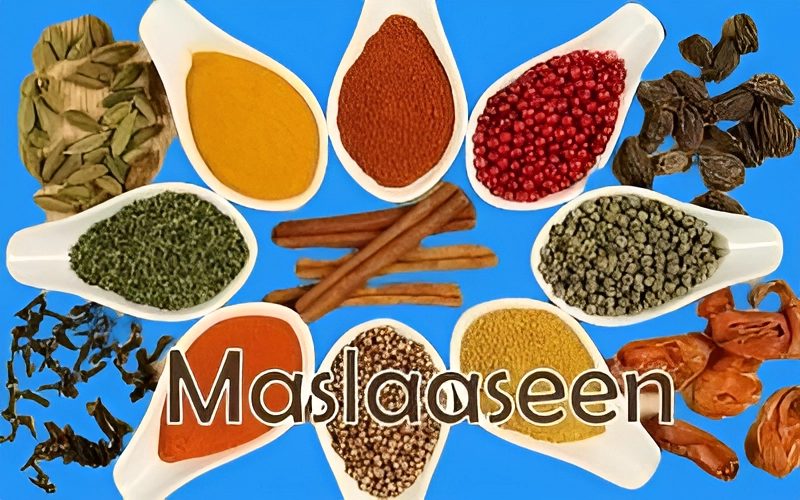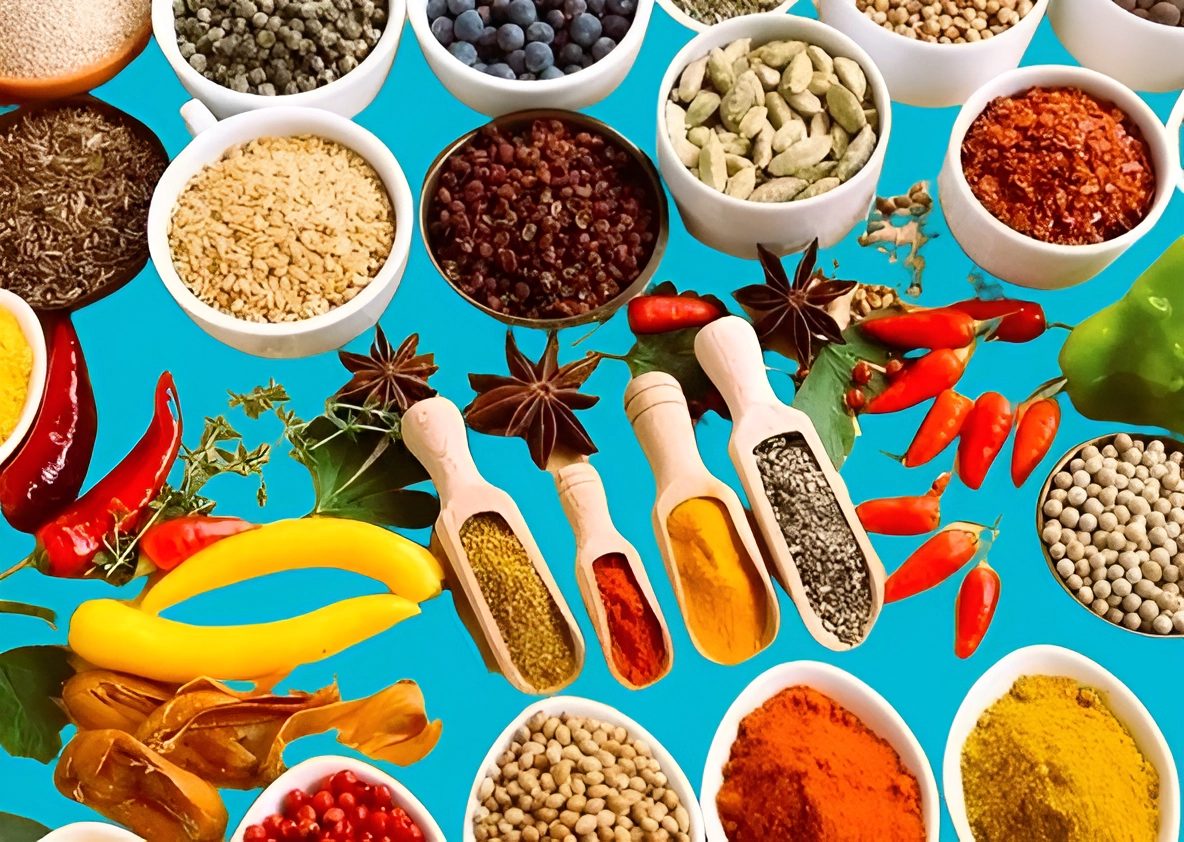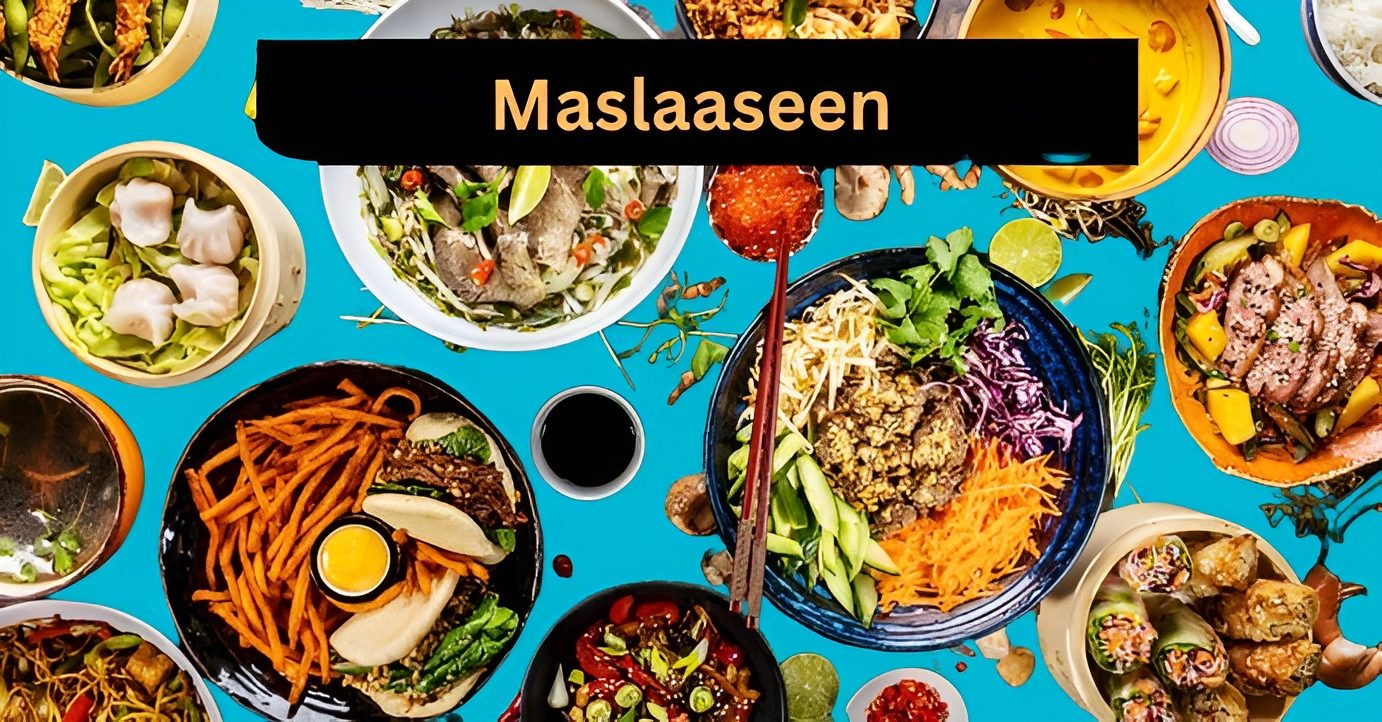When it comes to Lebanese cuisine, Maslaaseen and Mujaddara stand out as two iconic dishes that embody the essence of tradition and flavor. Maslaaseen, with its aromatic blend of spices and hearty ingredients, offers a culinary experience like no other.
On the other hand, Mujaddara’s simple yet comforting combination of lentils, rice, and caramelized onions has been a staple in Lebanese households for generations.
While both dishes showcase the versatility of Middle Eastern flavors, Maslaaseen tends to be more elaborate in its preparation compared to the humble simplicity of Mujaddara.
The rich history and cultural significance behind these dishes add an extra layer of depth to their appeal, making them not just meals but also representations of Lebanese heritage.
Whether you prefer the bold flavors of Maslaaseen or the comforting familiarity of Mujaddara, each dish brings its own unique charm to the table.
Maslaaseen: the New Food Trend to Revamp Your Lifestyle
Are you looking to elevate your culinary experience and add a touch of Lebanese flair to your meals? Look no further than Maslaaseen – the new food trend that is taking taste buds by storm!
Maslaaseen offers a delicious blend of flavors and textures, perfect for those seeking something different yet comforting.
By incorporating Maslaaseen into your diet, you can revamp your lifestyle with wholesome ingredients and exotic spices that tantalize the senses.
Whether you are a seasoned chef or a novice in the kitchen, trying out Maslaaseen recipes will surely bring excitement to your meal preparations.
Maslaaseen – What Does it Mean?

Are you curious about the mysterious-sounding dish known as Maslaaseen? Let’s unravel its meaning together. Maslaaseen is a Lebanese culinary term that translates to “mixed” or “assorted.” It embodies the concept of bringing different ingredients together in harmony, creating a symphony of flavors on your plate. This blend symbolizes unity and diversity, reflecting Lebanon’s rich cultural tapestry.
Maslaaseen isn’t just a meal; it’s a story told through food. Each ingredient contributes its unique essence, blending seamlessly to create a dish that transcends mere sustenance. As you savor Maslaaseen, you’re tasting history, tradition, and innovation all at once.
Embrace the spirit of Maslaaseen in your kitchen – mix ingredients with love and creativity to craft your own masterpiece. Whether it’s showcasing seasonal produce or honoring family recipes, let Maslaaseen be your culinary canvas for experimentation and joy.
Maslaaseen’s Origin and Cultural Significance

Maslaaseen, a dish deeply rooted in Lebanese culture, carries a rich history that dates back generations. Its origin can be traced to the traditional villages of Lebanon, where it was created by resourceful cooks using simple ingredients like lentils, rice, and onions. The dish symbolizes the essence of Lebanese cuisine – humble yet flavorful.
Culturally, Maslaaseen holds significance as a staple food that brings families together around the dinner table. It embodies the values of hospitality and warmth ingrained in Lebanese society. Whether served at home or shared during festive gatherings, Maslaaseen represents community and togetherness.
The preparation of Maslaaseen is not just about cooking; it’s a labor of love passed down through generations. Each family adds their own twist to the recipe, making each batch unique and special.
This culinary tradition is a way for Lebanese people to connect with their heritage and preserve their cultural identity.
In modern times, Maslaaseen continues to hold its place as a beloved comfort food among Lebanese diaspora worldwide. Its enduring popularity serves as a reminder of the enduring bond between food and culture.
Learn to Create Delicious Maslaaseen at Home
Are you ready to elevate your cooking skills and impress your family and friends with a delicious Lebanese dish? Maslaaseen is the perfect choice! Learning to create this flavorful meal at home will not only satisfy your taste buds but also give you a sense of accomplishment in the kitchen.
To start making Maslaaseen, gather all the necessary ingredients like eggplants, tomatoes, onions, chickpeas, garlic, and aromatic spices. The key lies in properly roasting the vegetables until they are tender and caramelized to perfection.
Once everything is cooked to perfection, mix them together along with some olive oil and lemon juice for that extra zing. The harmonious blend of flavors will transport you straight to Lebanon with every bite.
Experiment with different variations of Maslaaseen by adding your twist or incorporating seasonal produce. Let your creativity shine through as you master this traditional Lebanese delight right in your own kitchen!
## Exploring the Culinary Legacy of Maslaaseen
Exploring the culinary legacy of Maslaaseen takes us on a flavorful journey through Lebanese cuisine. Originating from traditional recipes passed down through generations, Maslaaseen is more than just a dish – it’s a symbol of cultural heritage and community.
The rich history behind Maslaaseen showcases the blending of diverse flavors and spices that define Lebanese cooking. Each bite tells a story of care and tradition, reflecting the deep-rooted connection between food and culture in Lebanon.
With its various regional variations, Maslaaseen offers a glimpse into the country’s culinary diversity, highlighting the influence of different regions on this beloved dish. From hearty stews to aromatic rice dishes, there’s a Maslaaseen recipe for every palate.
Preparing Maslaaseen at home allows you to experience firsthand the artistry involved in creating this iconic Lebanese dish. By mastering the delicate balance of flavors and textures, you can bring a taste of Lebanon into your kitchen and savor its delicious essence.
Understanding the Origin of Maslaaseen
Maslaaseen, a dish deeply rooted in Lebanese culinary heritage, carries a rich history that dates back generations. Its name originates from the Arabic word “slasa,” meaning to mix or combine—a fitting description for this flavorful medley of ingredients.
The origins of Maslaaseen can be traced to Lebanon’s countryside, where farmers would gather fresh produce and aromatic spices to create hearty meals.
This traditional dish symbolizes unity and community as families would come together to share it during gatherings and celebrations. Passed down through oral traditions, the recipes for Maslaaseen have evolved over time, incorporating new flavors while preserving its authentic essence.
Each region in Lebanon boasts its own variation of Maslaaseen, showcasing the diverse culinary landscape of the country. From simple home-cooked versions to elaborate restaurant renditions, this dish continues to captivate taste buds with its harmonious blend of textures and tastes.
By understanding Maslaaseen’s origin story, we gain insight into the cultural significance attached to this beloved Lebanese staple.
The Importance of Maslaaseen in Cultural Context
In the vibrant tapestry of Lebanese cuisine, Maslaaseen holds a special place as more than just a dish – it is a cultural emblem.
Passed down through generations, Maslaaseen reflects the deep-rooted traditions and values of Lebanese society. Its preparation and sharing are steeped in customs that celebrate community, hospitality, and togetherness.
From family gatherings to festive occasions, Maslaaseen symbolizes unity and connection. It serves not only as nourishment for the body but also feeds the soul with memories of shared meals and cherished moments.
The flavors of Maslaaseen resonate with history and heritage, bringing a sense of pride to those who prepare and enjoy it. Its presence on dining tables across Lebanon signifies a link to the past while embracing modernity.
In every bite of Maslaaseen lies a story – one that speaks volumes about resilience, identity, and belonging. As an integral part of Lebanese culture, this dish transcends mere sustenance to become a testament to the richness of tradition.
Varieties of Maslaaseen
Maslaaseen comes in a variety of delicious forms that cater to different preferences and tastes. One popular variation includes using lentils as the base, adding a hearty texture and nutty flavor to the dish. Another option is to incorporate bulgur wheat, offering a unique twist with its chewy consistency.
For those looking for a lighter version, Maslaaseen can also be made with quinoa instead of traditional grains, providing a protein-packed alternative. Additionally, some recipes call for the addition of caramelized onions or roasted vegetables to elevate the flavors and add depth to the dish.
Whether you prefer it spicy with added chili peppers or more tangy with lemon juice, there are endless possibilities when it comes to customizing Maslaaseen according to your taste preferences. Experimenting with different ingredients and seasonings allows you to create your own signature version of this classic Lebanese dish.
Preparing Maslaaseen
When it comes to preparing Maslaaseen, the key is in the blending of flavors and textures. Start by soaking lentils and rice for a few hours to achieve that perfect consistency. Next, sauté onions until golden brown, adding in spices like cumin, cinnamon, and a hint of paprika for depth.
Once your aromatic base is ready, mix in the lentils and rice before adding water or broth to cook everything together. Let the mixture simmer slowly until all the ingredients marry into a harmonious dish bursting with savory notes.
To elevate your Maslaaseen even further, consider topping it off with crispy fried onions or fresh herbs like parsley for a burst of freshness. Serve hot alongside some creamy yogurt or tangy pickles for a complete meal that will transport you straight to Lebanon with every bite.
Health Benefits of Maslaaseen
Beyond being a flavorful Lebanese dish, Maslaaseen boasts an array of health benefits that make it a nutritious addition to your diet. Packed with plant-based protein from lentils and fiber-rich bulgur wheat, Maslaaseen is a satisfying meal that keeps you feeling full longer.
The combination of ingredients in Maslaaseen provides essential vitamins and minerals such as iron, folate, and magnesium, which are crucial for overall well-being. Additionally, the garlic and olive oil used in the recipe offer heart-healthy benefits by promoting good cholesterol levels.
Moreover, spices like cumin and coriander not only enhance the taste but also provide anti-inflammatory properties that support immune function. By incorporating Maslaaseen into your regular meals, you can enjoy a delicious dish while reaping its numerous health advantages for a nourished body inside out.
Maslaaseen in Contemporary Cuisine
Maslaaseen has been making a bold statement in contemporary cuisine, bridging traditional flavors with modern culinary trends. This Lebanese dish is not just a meal; it’s a cultural experience on your plate. Restaurants worldwide are incorporating Maslaaseen into their menus, offering diners a taste of Lebanon’s rich gastronomic heritage.
With its versatile nature, Maslaaseen can be adapted to suit different dietary requirements and preferences. Whether you’re vegan, vegetarian, or a meat lover, there’s a variation of this dish for everyone to enjoy. Chefs are experimenting with unique ingredients and innovative cooking techniques to elevate the classic recipe while staying true to its roots.
In today’s food scene, where fusion and experimentation reign supreme, Maslaaseen stands out as a timeless dish that continues to evolve without losing its essence. Its ability to adapt and transform showcases the enduring appeal of Lebanese cuisine in the global gastronomy landscape.
Challenges and Controversies Surrounding Maslaaseen
When it comes to Maslaaseen, there are some challenges and controversies that surround this classic Lebanese dish. One of the main challenges is the modernization of traditional recipes. As culinary trends evolve, some purists argue that altering the original ingredients or cooking methods dilutes the authenticity of Maslaaseen.
Another point of contention is the debate over regional variations. Different regions in Lebanon have their own take on Maslaaseen, leading to disagreements over which version is the most authentic or superior.
Furthermore, there are also discussions about cultural appropriation and commercialization. Some critics raise concerns about non-Lebanese chefs profiting off a dish deeply rooted in Lebanese culture without proper acknowledgment or respect for its origins.
Despite these challenges and controversies, Maslaaseen continues to be a beloved staple in Lebanese cuisine, showcasing both its adaptability and resilience throughout history.
Cultural Significance: More Than Just Ingredients
The cultural significance of Maslaaseen goes beyond just its ingredients. It carries with it a rich history and tradition that is deeply ingrained in Lebanese culture. From family gatherings to special occasions, Maslaaseen holds a symbolic value that connects people to their heritage.
In Lebanese households, preparing Maslaaseen is not just about cooking a meal; it’s about preserving customs and passing down recipes from generation to generation. The act of making and sharing this dish strengthens bonds and fosters a sense of community among loved ones.
Maslaaseen also reflects Lebanon’s diverse culinary influences over the centuries. With flavors inspired by Arabic, Mediterranean, and Middle Eastern cuisines, it showcases the country’s unique blend of tastes and traditions. This fusion of flavors symbolizes Lebanon’s multicultural identity.
By embracing Maslaaseen in our modern kitchens, we honor the past while celebrating the present. Its cultural significance reminds us to cherish our roots and appreciate the stories behind each ingredient that comes together in this beloved dish.
The Culinary Alchemy: Maslaaseen in the Kitchen

As we delve into the culinary world of Maslaaseen and Mujaddara, it becomes evident that these classic Lebanese dishes hold a special place in the hearts and taste buds of many. While both dishes offer unique flavors and cultural significance, Maslaaseen emerges as a new food trend that not only revamps your lifestyle but also adds a touch of modernity to traditional Lebanese cuisine.
Exploring the origins, varieties, preparation methods, health benefits, and contemporary adaptations of Maslaaseen showcases its versatility in satisfying both palate and soul. The challenges and controversies surrounding this dish highlight the evolving nature of culinary traditions in today’s globalized world.
However, beyond just ingredients and recipes lies the true essence of Maslaaseen – a representation of Lebanon’s rich heritage and vibrant culture. As we witness Maslaaseen’s culinary alchemy unfold in kitchens around the world, it serves as a reminder that food is not merely sustenance but a powerful symbol of identity and connection.
So next time you sit down to enjoy a plate of Maslaaseen or Mujaddara, remember the stories they carry from generations past to present-day tables. Embrace the flavors, savor the memories, and celebrate the legacy that continues to unite us through food.
Frequently Asked Questions:
What is the difference between Maslaaseen and Mujaddara?
Maslaaseen is known for its aromatic blend of spices and mix of ingredients like lentils, rice, vegetables and herbs. It tends to have a heartier, more complex flavor profile compared to Mujaddara. Mujaddara’s simplicity lies in its signature combination of lentils, rice, and caramelized onions, which provide comforting familiarity.
Which dish is healthier – Maslaaseen or Mujaddara?
Both dishes are actually quite nutritious options. Maslaaseen contains lentils and rice, which provide fiber, protein, and minerals. It can also include veggies that add vitamins and antioxidants. Mujaddara boasts the same nutritional benefits as lentils and rice, while onions offer heart-healthy compounds. In terms of calories and fat content, they are quite similar. Choose either for a balanced Lebanese meal!
How do the cultural origins of Maslaaseen and Mujaddara compare?
Both dishes are deeply rooted in Lebanese culinary heritage. Maslaaseen’s name translates to “mixed” and represents Lebanon’s diverse influences. It symbolizes community and togetherness. Mujaddara has been a staple in Lebanese homes for generations and also brings people together. Their preparation and sharing strengthen cultural identity and values of hospitality. Bite into either for a taste of Lebanese history, traditions, and resilience.
How can I try making Maslaaseen and Mujaddara at home?
Both dishes are perfect for beginner chefs to explore Lebanese cuisine. For Maslaaseen, start by roasting vegetables to bring out flavors. Simmer lentils, rice, and spices for the aromatic blend. Top with crispy onions. Mujaddara requires soaking lentils/rice before simmering with caramelized onions. Adjust seasonings to taste.
Final Words:
Whether enjoying Maslaaseen’s blend of textures and tastes or Mujaddara’s simplicity, these iconic Lebanese dishes nourish more than just our bodies. Every bite tells a story that spans cultures and connects us to traditions. Most importantly, they remind us of the power of food to bring people together and foster a shared sense of identity, community, and home.
